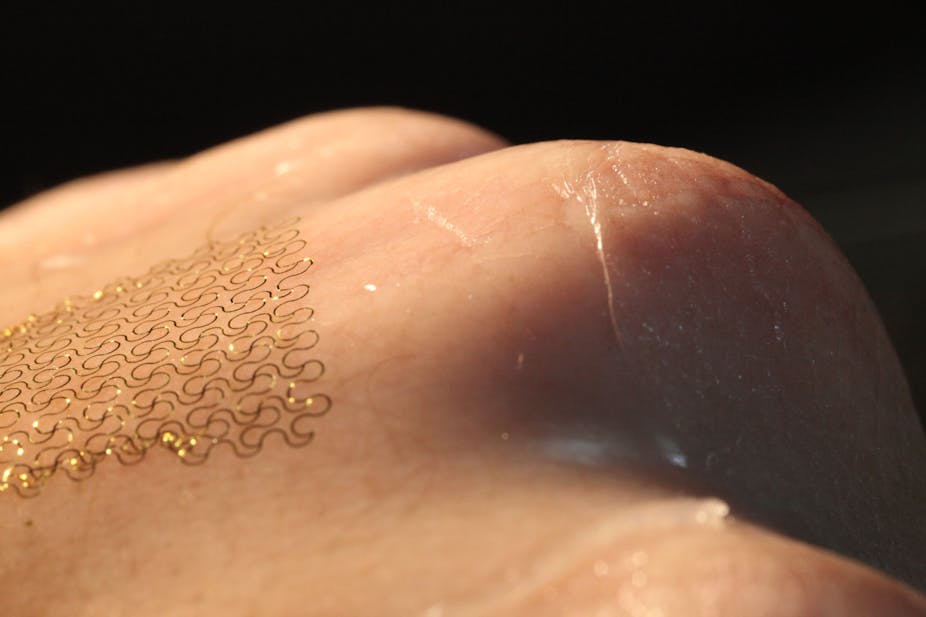Scientists have invented new stick-on ‘tattoos’ that track human heart, brain wave and muscle activity and could one day replace cumbersome medical monitors.
Known as an epidermal electronic system (EES), the miniature sensors contain tiny electronic components like transmitters and light emitting diodes and are thin enough to mould perfectly to a patient’s skin.
“Our goal was to develop an electronic technology that could integrate with the skin in a way that is mechanically and physiologically invisible to the user,” said John Rogers, a professor in materials science and engineering department at the University of Illinois at Urbana-Champaign and a member of the research team that developed the ultra-thin monitors.
“We found a solution that involves devices we designed to achieve physical properties that match to the epidermis itself. It’s a technology that blurs the distinction between electronics and biology.”
The research team, which included scientists from China, Singapore and the US, reported their findings in a paper published by the journal Science.
Professor Mark Kendall from the Australian Institute for Bioengineering and Nanotechnology at the University of Queensland said early tests showed the non-invasive monitors delivered high quality signals.
“This work is seminal and has the potential to be game changing,” said Professor Kendall, who was not involved in the research.
“I have not seen this done before – especially given that it is considered the skin has historically been "understudied” mechanically,“ he said.
"This work certainly opens up a new paradigm in in-situ, non-invasive sensing.”
For analysis of this development read Tattoo you: the stick-on medical revolution

